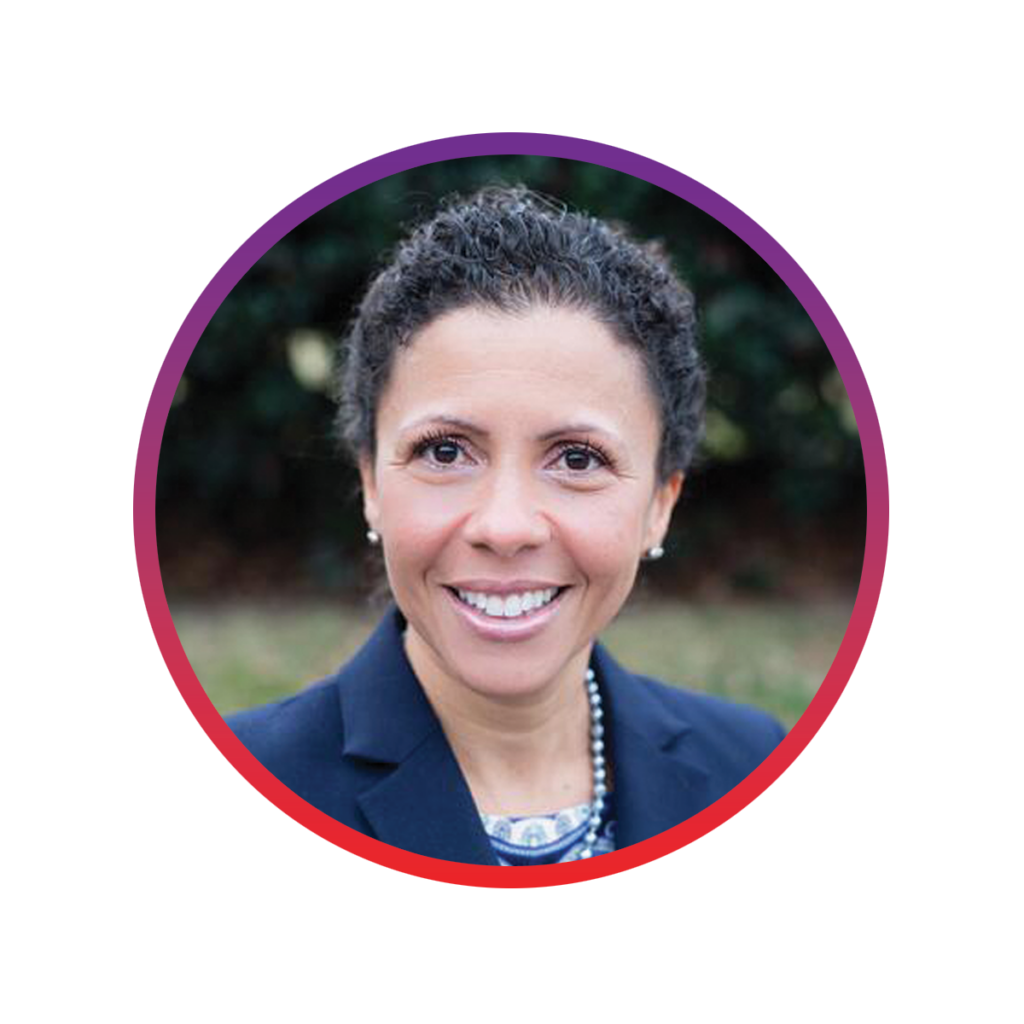In episode 70 of Teaching Channel Talks, we were joined by Shouvik Paul, the Chief Operating Officer at Copyleaks. As a leading AI-powered content and plagiarism detection platform, Copyleaks is at the forefront of supporting teachers in an evolving education landscape that now includes tools like ChatGPT and Shouvik sheds light on the potential of AI programs like ChatGPT to augment the learning experience for students.
If you weren’t able to listen in, now you can read through this impactful discussion about why ChatGPT is intimidating educators and how we can learn to embrace AI in education. We’ve also included a free resource with 50 ChatGPT prompts you can try out right now!
Wendy: People can hardly stop talking about ChatGPT, this was just released in November of 2022 and here we are a handful of months later still talking about it. But this is not a new concept for you, Shouvik, this is a lifelong career world that you’ve been in, so why don’t you tell me a little bit about your background?
Shouvik: Personally, I have been involved in various fields of technology, ranging from ed tech to media tech to security tech, all within the SAS domain since the late 90s. However, what truly excites me is the work we’ve been doing with Copyleaks, an enterprise-level SAS software designed to detect the origins of content. Knowing where the content originated from has been an incredibly thrilling endeavor for me. I have been fortunate enough to be involved in this project, and it feels like the perfect combination of being in the right place at the right time. We started developing solutions for AI detection quite some time ago, and then since the popularity of ChatGPT skyrocketed, particularly around Thanksgiving, it has become a major topic of discussion.
Wendy: It’s really something isn’t it? I love that you’ve described Copyleaks as a way to look at the origins of content because I hear you very carefully avoiding some of the words that are often associated with the origins of content in education, like cheating and plagiarism.
Shouvik: Absolutely, so the founders of this company actually met while serving in an Israeli military unit specialized in cyber security. During their time together, they focused on text analysis. When they completed their military service, they aimed to apply their knowledge in a meaningful way, particularly in the field of education. Interestingly, AI technology had not been widely adopted in education compared to other industries.
They believed that understanding the meaning of sentences and paragraphs was crucial for connecting the dots and achieving something significant and they wanted to go beyond simply identifying copied content and instead focus on helping students. They recognized that educators chose their profession to assist students, not just to monitor them. This perspective was especially important for foreign students who had limited exposure to concepts like plagiarism before joining universities. Explaining the basics of not copying is easy, but when teachers encourage students to rephrase and express ideas in their own words, it can become confusing and leaves room for interpretation.
Through collaboration with numerous universities, we have integrated our software at the LMS level, eliminating the need for additional steps. Our motivation for entering this field was to apply AI in a meaningful manner. Let me provide an example: In our system if you run a report on a topic like George Washington, we will display all the matches we found across the web using our exclusive database. However, if our focus were solely on detecting identical matches, such as direct copy-pasting, the results would be insignificant. Students often change words or unintentionally misunderstand the concept of making something their own. Our system goes beyond that. It can identify paraphrased content and connect the dots, even when paragraphs are reworded differently.
This has led to fascinating discoveries. The majority of students who engage in plagiarism usually do so inadvertently, forgetting to attribute quotes or misunderstanding the concept of making the content their own. It’s a broad term with numerous gray areas. Our system helps students identify these areas, rather than waiting until after submission to run a plagiarism check. Many universities have embraced our approach, allowing students to access these reports while they are working on drafts. It’s a helpful way for students to assist themselves. Over time, our vision of leveraging AI has evolved into the ChatGPT world we currently inhabit.
Wendy: Let’s talk a little bit about ChatGPT because you’ve made it clear that you’ve been in this space of AI. Are there some benefits to ChatGPT? What can help educators get excited about it instead of being afraid?
Shouvik: You know, it’s completely understandable that educators feel apprehensive about new technologies. Think back to the early days of calculators. Teachers were teaching math, and then calculators came along, raising concerns. But calculators didn’t stop students from learning math; they expanded to performing more complex calculations. Whenever something new emerges, it’s natural to feel uneasy. Similar conversations arose when the internet became popular. Students were told to go online and copy information, and file sharing made it even easier.
It’s an evolutionary process when you really think about it. In the past, the primary concern was students looking at someone else’s paper in a physical classroom. But with the internet, students could share and access content from anywhere in the world which posed a new monitoring challenge. However, we must remember that internet adoption took time—over a decade—before people fully grasped its usage. In education, we had plenty of time to address those issues and then the problems evolved. It was no longer about looking beside you but rather across the globe, so tools emerged to help detect plagiarism and similar issues.
Now, as for your question about the positive use of this technology, the truth is we’re still figuring it out. We don’t have all the answers yet. However, I have some speculations. I believe we’re going through the typical cycle of fear with emerging technologies. Once mass adoption occurs, we’ll witness positive outcomes. While there’s talk about job displacement, I think it will be similar to calculators. It accelerated certain tasks, allowing people to focus on more complex or valuable endeavors. That’s what we can expect from this technology.
Additionally, we might see an equivalent of “show your work” in written content. Similar to how calculators became accepted in math as long as the steps were shown, we may establish a similar practice for other areas. The specifics are still unclear, but we could see the equivalent of demonstrating one’s thought process. It’s not about defeating or preventing technology; it’s about embracing it and finding ways to enhance education. Interestingly, the New York school system was one of the first to ban ChatGPT from their schools. However, it’s important to keep exploring how we can make the most of these advancements rather than dismissing them outright.
Wendy: The first thing you said was that it could drive teachers to work on tasks that are more complex, where we can let the machines do things like recall classification labeling, and we can have technology gather sources for us, but the analysis requires a human brain for interpretation, synthesis, and evaluation. Those are things where we’d have to take another huge leap in technology to get those complex, higher-order skills.
Shouvik: Exactly, it’s essential to consider alternative uses for this technology and these are the aspects we’ve been contemplating extensively. In today’s increasingly isolated world with more remote learning, the foundation for sharing ideas is often harder to establish. That’s where the potential lies.
Imagine using this technology as a starting point, not for copying and pasting, but to ignite and stimulate ideas. That’s precisely what we’re working on—finding ways to incorporate the positive aspects of ChatGPT. Let’s say you’re responding to a question. Instead of providing the exact answer, we can offer keyword subjects or important elements that would greatly enhance your response. This approach reduces the temptation to go to ChatGPT for the answer and simply copy and paste it. By implementing such methods, we empower students to harness the potential of this new technology without the fear of plagiarism. Of course, it’s valid to be concerned about how much of the future’s work will rely solely on ChatGPT and similar technologies.
Wendy: But there are characteristics of what ChatGPT generates that are indicative of AI: long sentences, too much complexity, lack of emotion.
Shouvik: Absolutely, the truth is, AI today is not some magical force. It’s not really thinking on its own yet, but that’s probably a good thing. AI is still in the process of learning from others. That’s where we currently stand, especially with tools like ChatGPT. It’s worth noting that ChatGPT isn’t the first tool to excel in this area. Other tools like Jasper have been assisting marketing departments with content creation for a few years now.
In our business, we initially focused on the education sector, but we expanded with the launch of our API. This API brought the power of various capabilities, including plagiarism detection and content analysis, to the enterprise sector. We have a diverse range of companies, including Cisco, the United Nations, Accenture, and NASA, with over 300 companies utilizing our services. These companies have different motivations, such as ensuring their writers aren’t plagiarizing, protecting their content from competitors, and generating white papers, research papers, and blogs. Since we began working with enterprises early on, they tend to be early adopters of innovative technology.
Wendy: Well, everything in education moves slowly. We know that. That’s a tough beast to move!
Shouvik: Exactly. Considering those trends, we recognized the direction things were heading and took action accordingly. As I mentioned earlier, we were quick to respond when ChatGPT was released, ensuring our readiness within a month. We made sure that every educational institution using our integration with learning management systems like Canvas or Noodle had access to the features. Starting on January 1st, in addition to plagiarism reports, students could easily identify if an assignment had been written with the assistance of AI.
Wendy: Let’s shift our focus to education and explore the benefits of using ChatGPT to support teachers. We have already received recommendations on leveraging AI, specifically ChatGPT, to facilitate students’ growth in their work. It’s crucial to acknowledge the existence of this tool. Here’s a suggestion: write a draft and then run it through ChatGPT, critically examining the changes, improvements, or edits it suggests. Engage in a discussion about why certain modifications work or don’t work, using this process to inform future writing assignments. This approach provides a specific and valuable recommendation. Another use case could be creating study guides for students. A teacher can input a student’s writing sample into the system, identify areas of weakness or opportunities for improvement, and use that information to tailor personalized study guides for individual students. This becomes an incredible tool for differentiation, catering to each student’s specific needs.
Shouvik: I believe using ChatGPT for creating study guides can be beneficial. In certain types of classes, it can even be used to explore the ideal answer for a question. As a professor or teacher, it’s natural to think you know the best answer, but there might be points you’ve missed. ChatGPT can help you double-check and identify any additional elements that should be included in your answer. It’s a useful tool to ensure thoroughness and broaden your perspective.
Wendy: There’s definitely an understanding that ChatGPT offers the risk of perpetuating bias and the risk of spreading misinformation, not thinking about Copyleaks as a detection tool, but ChatGPT as an influencer of our thinking. What do you think about that?
Shouvik: As an AI company, it’s important to recognize the distinctions here. ChatGPT doesn’t rely on a specific dataset; it learns from the entire web, encompassing bloggers, reputable news agencies, and the vast amount of noise found online. Over time, it may become more sophisticated in filtering out the noise, but determining what’s good or bad is subjective. People have different criteria for assessing quality. Currently, ChatGPT’s data aggregation isn’t perfect, but it’s not entirely flawed either.
In contrast, at Copyleaks, we have a rich history of analyzing millions of student papers, which are typically aimed at achieving high grades, so they should be using factual information. We have honed our ability to identify reliable data. When comparing ChatGPT’s content with the data we process, we notice some distinct differences. Firstly, much of ChatGPT’s writing quality is lacking. In certain cases, it’s evident that the text was generated by AI, even without our confirmation. Experienced professors, especially those with tenure, can readily discern the disparities between an AI-generated paper and one written by an actual student.
Wendy: We hear ChatGPT is producing papers that pass exams, even law school classes, but they’re not getting A’s!
Shouvik: It’s true! ChatGPT’s performance may not be at an A-level currently. It’s important to note that ChatGPT is based on GPT-3, and with the introduction of GPT-4, it will likely become more advanced and sophisticated. As it evolves, it will undoubtedly improve over time. On our end at Copyleaks, people often wonder how we achieve our results. It’s akin to living in a Manhattan apartment and hearing knocking on the wall. Initially, it’s just knocking, but let’s say I learn Morse code and now understand the underlying pattern, I might realize it forms a word, conveying a specific message. Similarly, we utilize AI to identify AI-generated content. It’s the intelligent approach required to tackle this challenge effectively.
This conversation has been edited for length and clarity, but you can listen to the full episode of Teaching Channel Talks and find accompanying learning resources here.
Our Guest

Shouvik Paul is the Chief Operating Officer at Copyleaks, the world’s leading AI-based content and plagiarism detection platform. With an impressive career spanning over 20 years in media and Ed Tech, Shouvik brings a wealth of knowledge and expertise to the table. At Copyleaks, he’s on a mission to empower educators and institutions globally to tackle plagiarism head-on and promote integrity in writing. Shouvik is passionate about utilizing AI in education to shape the future of learning, keeping pace with technology’s rapid evolution.
Our Host

Dr. Wendy Amato earned her Master’s in Education and Ph.D. in Curriculum and Instruction from the University of Virginia. She holds an MBA from James Madison University. Wendy began teaching in 1991, has served as a Middle School Administrator, and still teaches at UVA’s School of Education. She has delivered teacher professional development workshops and student leadership workshops in the US and internationally. Wendy and her family live near Charlottesville, Virginia.
Teach with ChatGPT
Are you a tech-savvy teacher ready to start leveraging ChatGPT in your classroom? This free list of ChatGPT prompts will help you craft “just right” commands so you can get the most out of this robust tool. Find a prompt, modify it to suit your needs, and see the difference it can make in your classroom!







